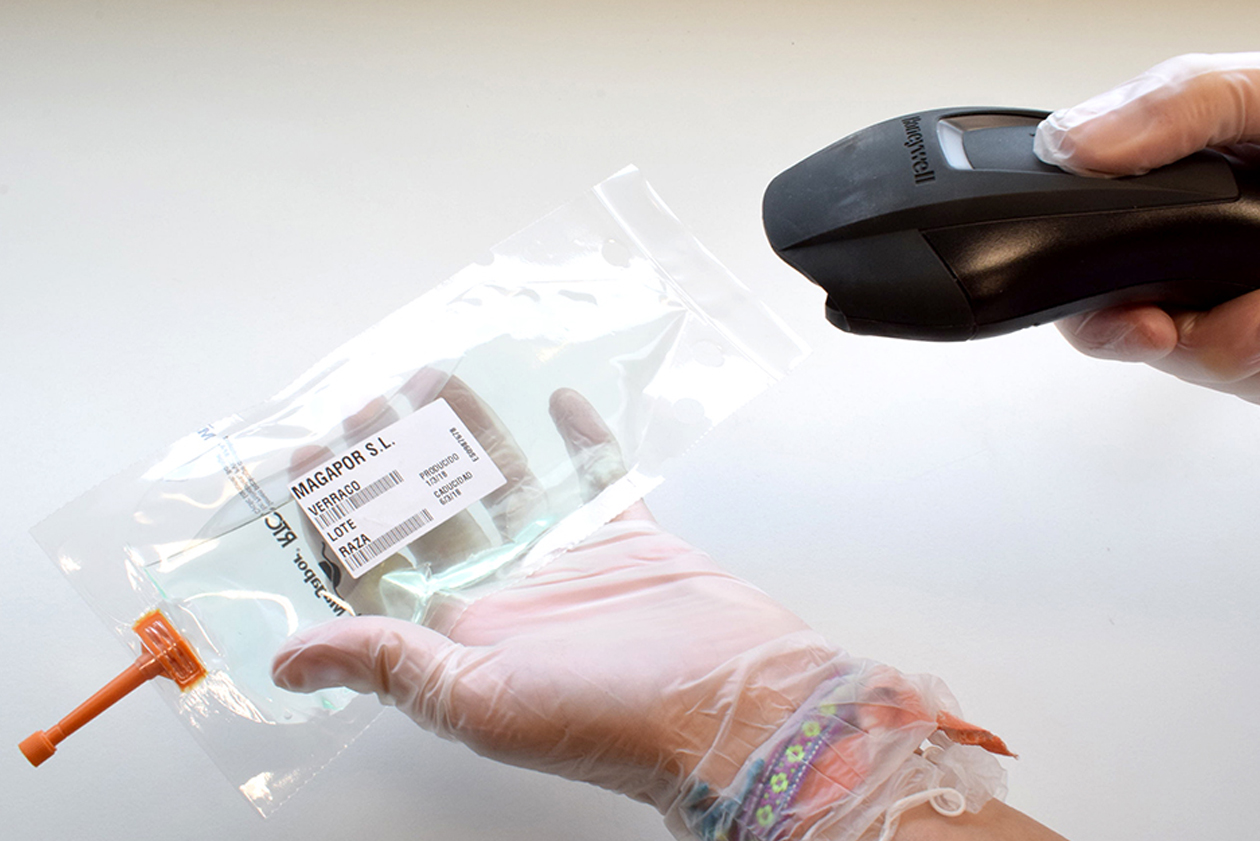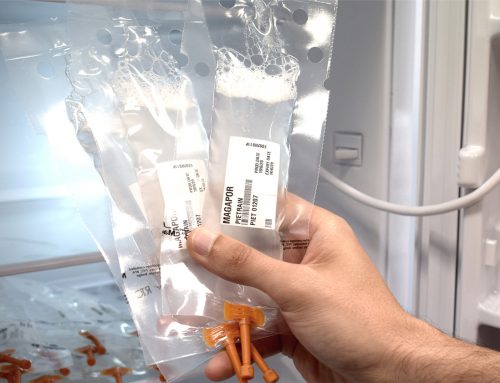by Noelia Mendoza, Pedro Soler, Joaquin Miquel and Raquel Ausejo, Veterinary R+D Department, and Maria Victoria Falceto, Olga Mitjana, Department of Animal Pathology, Faculty of Veterinary Medicine, Zaragoza, Spain.
First published in International Pig Topics.
The process of preparing and storing seminal doses is key for obtaining maximum fertility and profitability from a boar. The sperm quality of the male is certainly a decisive factor, but posterior alterations till insemination time can be prevented and/or controlled.
A critical point in the preparation of seminal doses is any decrease of the optimal quality and fixed durability of the semen doses produced. For that reason, any factor that may alter the capacity to produce doses, prolificacy and fertility rates and/or imply the introduction of pathogens from boar studs into the farms should be controlled.
Therefore, the focus of attention should be placed on the laboratory (materials, water quality, temperature and extender), staff, biosecurity, hygiene and disinfection, as well as animal health. Control of the doses produced is lost after departure from the stud facilities. It is thus essential to achieve maximum quality at such moment, so any possible stressing factor occurring before artificial insemination in the farm can be buffered.
1.- Laboratory materials
With regards to laboratory materials, all the items in contact with sperm should be free of reprotoxics and cytotoxics. Water quality also has a significant role, because the preservation of the doses elaborated highly depends on the type of water used. Water used to produce semen doses should be type II or III, low in calcium residue (soft water) to maintain correct conductivity, and contamination-free. Altered water could reduce preservation time of the semen doses by damaging the spermatozoa.
Regarding reprotoxics in compounds from multilayer plastic bags, this is the article that we published in the scientific journal Nature, in collaboration with the Engineering Research Institute of Aragon (I3A).
2.- Temperature
Temperature is also a significant factor, not only at collection (to prevent thermal shock), but also at the stage of dilution. The temperature difference between the extender and the ejaculate should not exceed 2 degrees. For that reason, the temperature of the ejaculate at its arrival at the laboratory should be monitored and that of the extender, regulated accordingly before the final dilution. Even when the doses are prepared correctly and at the right temperature, transport to the farms should be made in cool boxes at 15ºC-17ºC to prevent temperature fluctuation. High performance extenders are designed to protect the sperm membrane and stand light temperature changes, but not all the extenders in the market are prepared for that task. Temperature should be checked again at arrival at the farm and during the storage of the doses till insemination time.
3.- Personnel
Staff is a key point in the production process of seminal doses. Employees should be aware of the importance of observing the biosecurity measures of the stud to prevent contamination and be properly qualified, with the necessary knowledge to work with animals and in the laboratory, given their role in the elaboration of the final product. Faulty knowledge and/or work could compromise the preservation and posterior fertility of the doses, so continuous training is essential for success.
4.- Biosecurity, hygiene and disinfection
Correct biosecurity, cleanness and disinfection have a positive influence on the microbiological quality of the semen doses. This implies preventing the introduction and/or dissemination of pathogens in the stud that could affect the health and welfare of the animals, as well as the quantity of bacteria entering the doses. Measures to be adopted include the use of non-cytotoxic and non-reprotoxic materials, establishing separate dirty and clean areas and performing sanitary controls on the animals to prevent infections that could affect semen quality. Moreover, collection pits, as well as all the disposable materials and surfaces that enter in contact with semen (including the tubes used to fill blister/tubes) should be correctly washed and disinfected at the end of the workday to remove bacteria that could accumulate in a biofilm and create resistances.
5.- Extender
The main role in the preparation of semen doses is played by the extender used. Extenders are biological means that maintain the correct functionality of sperm for a determined period of time, reducing the negative effects of cell ageing, keeping a balance that favors the survival of semen while controlling bacterial contamination. Controlling thus the means from a physical-chemical point, the final product obtained is capable of maintaining the viability of the sperm cell in the best condition, preventing the processes of cell damage and even rising fertility and prolificacy rates.
Reconstituted with distilled water, extender is the 85-90% of the volume of a semen dose, so it is important to use extenders that guarantee the high performance of the dose in any situation. The extender chosen should be capable of buffering stressing factors like those described above (temperature, cell ageing, etc…), even contamination that could not be controlled during the preparation of the doses and which could be stopped by the effect of the extender. Similarly, derived damaging effects could also be controlled. Limited contamination not avoided in the elaboration process could go unnoticed and without effect on sperm or fertility if a top extender is used. That is so because their high quality components, not only the antibiotics, but also the antioxidants and sperm protectors, prevent bacteria from proliferating and altering the functionality of the sperm cells.
For more information, do not hesitate to visit the products section of our website.
Or contact us for a proper personalized technical advice.




